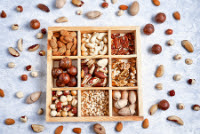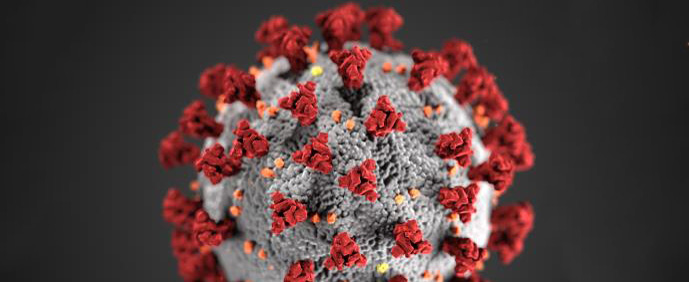A healthy gut supports a healthy immune system! Up to 75% of the immune system’s cells are found within the mucosal membranes that make up the gastrointestinal tract.
Healthy Gut, Healthy Body: What You Need to Know
The human body is home to over 100 trillion microorganisms, the majority of which are found in the gastrointestinal tract (“gut”). Taken as a whole, this community of microorganisms, their genes and the functions they encode, are referred to as the microbiome.
During the past two decades, research has revealed significant associations between the gut microbiome and conditions such as cardiovascular disease, obesity, diabetes, inflammatory bowel disease (IBD), irritable bowel syndrome (IBS), Crohn’s Disease, psoriasis, and cancer. Recent research is also striving to understand the correlation between the microbiome and Alzheimer’s Disease, autoimmune conditions, and various inflammatory responses. Because of the highly individualized make-up of each person’s microbiome, researchers are exploring how nutrition and other factors influence the gut microbiome and how imbalances can be corrected with lifestyle interventions.
Disruption to the delicate balance in the microbiome can be caused by many factors, such as
- age (microbiome composition changes throughout the lifespan)
- dietary habits and quality of our food
- history of illness, existing chronic health conditions or autoimmune conditions
- imbalance in stomach acid production
- frequency of use of certain prescription medications including antibiotics
- lifestyle factors: smoking (including e-cigarettes), use of alcohol or recreational drugs
- high stress level
- exposure to toxins in the environment (e.g., work conditions, atmosphere)
While research reveals a link between lifestyle factors, the microbiome, and the health of our system, there is a great deal more to be discovered. For example, scientists want to better identify which bacteria in the microbiome are most implicated in specific diseases. They also want to understand whether an imbalance is the cause for the disease, or the result of the disease, or both.
One thing that is clear: Failure to take care of ourselves disrupts the microbiome, which then creates a cycle of imbalance that manifests in symptoms of illness (in the gut and in other organs). Some of these include:
- poor absorption of nutrients (tested by a physician)
- bad breath (halitosis)
- recurrent upset stomach, nausea, or bloating
- persistent constipation or diarrhea
- difficulty urinating
- vaginal or anal itching or discharge
- rash or redness
- fatigue
- trouble concentrating
- changes in mood
Unless the microbiome is brought back into balance, symptoms of illness will persist and quality of life diminishes. Even if you have been ill, or not kind to your body with a healthy lifestyle, there is good news: Healthy dietary changes and nutritional supplements can rebalance the microbiome, strengthening immunity and reducing inflammation throughout the body. Here are a few tips to help rebalance your gut:
Eat a whole foods diet. In particular, the high-fiber, nutrient-rich foods in the Mediterranean Diet has been shown to protect the integrity of the gut microbiome.
Eat more fermented foods. Fermentation is a process for preserving food that can improve digestibility. Fermented foods contain bacteria that are an important source of nutrients and health-promoting bacteria for the gut.
Take a prebiotic/probiotic supplement. Prebiotics are a type of fiber that the human body cannot digest. They serve as fuel for probiotics, which are tiny living microorganisms, (bacteria and yeast). Both prebiotics and probiotics support the body in building and maintaining a healthy gut.
If you’ve had ongoing problems with gastrointestinal symptoms, it’s time to see Dr. Fenske rather than trying to treat the gut on your own. Since the microbiome is unique to each person, you need a personalized approach to rebalancing, which can be provided in consultation with a functional medicine practitioner.
‘Go Nuts’ for the Health Benefits of Tree Nuts
From breakfast to dinner to snacks, tree nuts are popular across the globe. They can be eaten whole (fresh or roasted), in spreads and butters, used as a source for gluten-free flour, and blended into smoothies or dessert recipes. Nut oils are used for cooking and are even found in skincare and haircare products. But what is a nut? And what makes nuts so good for our health?
 Tree nuts are dry fruits with one seed that becomes hard at maturity. With the exception of chestnuts, which have a different nutrient profile and higher level of starch, the most popular edible tree nuts are almonds, hazelnuts, walnuts, pistachios, and cashews. Other favorites include pecans, macadamia, and Brazil nuts. And then there’s the peanut: even though it grows from the ground rather than on a tree and is technically a legume, its nutrient profile is considerably similar to tree nuts.
Tree nuts are dry fruits with one seed that becomes hard at maturity. With the exception of chestnuts, which have a different nutrient profile and higher level of starch, the most popular edible tree nuts are almonds, hazelnuts, walnuts, pistachios, and cashews. Other favorites include pecans, macadamia, and Brazil nuts. And then there’s the peanut: even though it grows from the ground rather than on a tree and is technically a legume, its nutrient profile is considerably similar to tree nuts.
What Makes Nuts Good for Health?
Nuts are low in carbohydrates and high in vegetable protein, fiber, magnesium, antioxidants, vitamins, and minerals. They are low in saturated fat and a rich source of ‘healthy’ fats, mono- and polyunsaturated fatty acids (MUFAs and PUFAs). Studies show that nuts . . .
- protect the heart, helping reduce risk for cardiovascular disease
- support cellular defenses against free radicals that damage cells and are implicated in chronic disease
- balance insulin levels, which relates to lower risk for Type 2 Diabetes
- support healthy brain tissue
- reduce inflammation
- help maintain healthy cholesterol level
- help maintain a healthy body weight
Epidemiological studies show regular consumption of nuts is linked to lower risk of all-cause mortality. High nut intake is associated with better overall cognition at older ages. In particular, walnuts are high in an essential fatty acid, named Omega-3 fatty acid, important to brain function. Pistachio nuts have been associated with significant gamma brain wave activity, critical for cognitive processing, memory, learning and perception.
It’s clear that tree nuts make an indispensable contribution to a well-balanced diet for omnivores and vegetarians alike. So, find a nut you love and make it part of your daily diet.
Nuts for Nut Milks! How to Make any Variety
With endless varieties of nut milks lining the grocery shelves, you might wonder “Can I make my own nut milk at home?” Yes you can, and it’s not as difficult as you might think. You can enhance this basic recipe, good for nearly any nut, by adding fresh berries, coconut, or blending varieties of nuts (Cashew-Almond Milk, for example). Start simple and when you’re comfortable with the basic recipe, experiment with flavor.
Nut Milk Basics
- Buy raw unsalted nuts
- Soak the nuts overnight according to guidelines listed below (also see website listed in Resources)
- Drain and rinse the soaked nuts
- Blend the nuts with fresh, clean water (use a high quality blender)
- Strain the nut milk. For sustainability, use a piece of clean cotton cloth. It can be washed and reused hundreds of times.
- Sweeten with raw honey, molasses or stevia if desired
- Chill, drink, enjoy!
Helpful Tips
A blender is the best tool for this job, but a food processor works too. Nut milk from a blender is a bit creamier and sweeter.
After blending, straining the milk provides the best consistency for a drinkable nut milk.
Some folks prefer to leave their nut milk unstrained, especially those with high-powered blenders, but unstrained milk will separate more in the fridge and will need to be mixed again before serving. Unstrained milk is thicker and creamier than strained.
Another option, for those who prefer a thinner milk, is to add clean water to strained or even unstrained milk. Simply add clean water until the milk reaches your preferred consistency.
To make 2 cups of Cashew Nut Milk:
- 1 cup raw, unsalted cashews, or any raw nuts without skins
- 2 cups water
- Soaking water
Soak the nuts: Place the nuts in a medium glass bowl. Cover with water. Cover the bowl with a cloth and let sit overnight at room temperature or up to 2 days in the refrigerator. The nuts will plump as they absorb water and should feel a little squishy if you pinch them. The longer the nuts soak, the creamier the milk will be.
Drain and rinse the nuts: Drain the nuts through a fine-mesh strainer or colander, then rinse them thoroughly under cool running water. Place the nuts in a blender (or food processor) and add the 2 cups of water.
Blend on high speed: Pulse the blender a few times to break up the nuts, then blend continuously on high speed for 3 minutes. If using a food processor, process for 4 minutes total, pausing to scrape down the sides halfway through. The nuts should be broken down into a very fine meal, and the water should be white and opaque.
Strain out the nut meal: Line the fine-mesh strainer or colander with either an opened nut bag, 2 layers of cheesecloth or a piece of cotton and set over a measuring cup or bowl. Pour the nut mixture through the strainer. Gather the nut bag or cheesecloth around the nut meal and twist close. Squeeze and press with clean hands to extract as much nut milk as possible. You should get about 2 cups.
Refrigerate the nut milk: Store the nut milk in sealed containers in the refrigerator for up to 4 days. If it separates, just shake to recombine. Save the nut meal for another use such as in vegan lasagna, enchiladas, home-made ice cream, cookies and more!
Nut Soaking Guidelines by Hardness
Long-soak nuts (almonds, pistachios, and hazelnuts) need at least 8 hours.
Medium-soak nuts (pecans, walnuts, and Brazil nuts) are oilier and swell up quickly, so require less soaking time.
Short-soak nuts (cashews, macadamias, and pine nuts) have the highest fat content and require only 2 to 4 hours soaking. Do not soak these nuts for longer than 4 hours. Soaking them for extended periods of time breaks down their health-promoting oils.
[hr]
Guiding Principles

THE INFORMATION OFFERED BY THIS NEWSLETTER IS PRESENTED FOR EDUCATIONAL PURPOSES. NOTHING CONTAINED WITHIN SHOULD BE CONSTRUED AS NOR IS INTENDED TO BE USED FOR MEDICAL DIAGNOSIS OR TREATMENT. THIS INFORMATION SHOULD NOT BE USED IN PLACE OF THE ADVICE OF DR FENSKE OR ANOTHER QUALIFIED HEALTH CARE PROVIDER. ALWAYS CONSULT WITH DR FENSKE OR ANOTHER QUALIFIED HEALTH CARE PROVIDER BEFORE EMBARKING ON A NEW TREATMENT, DIET OR FITNESS PROGRAM. YOU SHOULD NEVER DISREGARD MEDICAL ADVICE OR DELAY IN SEEKING IT BECAUSE OF ANY INFORMATION CONTAINED WITHIN THIS NEWSLETTER.
Image attributions: click here



